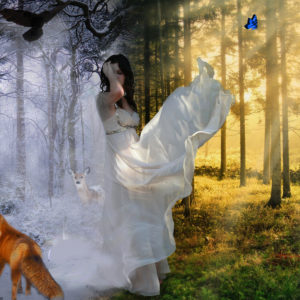originally published on deepimagery.org http://deepimagery.net/blog/2014/08/14/does-the-ptpp-work-with-shadow/
What is “shadow?”
Shadow is a term used in Jungian Depth psychology to name in a collective way, all those parts of ourselves that we are either not aware of or do not wish to own about ourselves. As Jung wrote in The Archetypes and the Collective Unconscious “The shadow personifies everything that the subject refuses to acknowledge about himself” (284).
The PTPP® and Shadow
One of the main understandings in the Personal Totem Pole process and the Deep Imagination, is a fundamental idea of wholeness. As individuals, using the PTPP®, the focus is on working towards our own wholeness. That is, we work to enable space for all of our self to be present, including those parts we do not know yet in order that we may be fully present at any given moment. In this way, the Personal Totem Pole Process can be seen as consistently engaging with shadow as one integrates more and more of who one is, through deep imagery journeys.
The understanding is that through working with the Deep Imagination, we can come into relationship with the parts of ourselves, of which, due to injury or survival or life events, we have been unaware. Through the deep imagination, these “unawarenesses” reveal themselves to us at the time most appropriate for our growing. The “unawarenesses” we encounter may either be positive (to do with our strengths, wisdom, creativity etc.) or negative (to do with aspects of ourselves we dislike: anger, jealousy, fear, spite etc.).
A fundamental concept in the PTPP® is that of relationship to all the parts of ourselves. These parts of ourselves, aspects of our aliveness that we may or may not be aware of, often appear as animals in a deep imagery journey. In the journey, the journeyer is in relationship with the animals and other guides one meets. Awareness of the nature of the relationship is very important. Is it one of joy? Anger? Dismissal? Fear? Love? Like? neutrality? Uncertainty? What feelings are present? What thoughts? Have I an attitude of curiosity? Curiosity towards the animal I’ve met and towards the attitude or reaction I have? Relationship involves communication with the animal, listening to the response, and space for further interaction.
Often, the aspects of ourselves that we dislike or dismiss, will come in a deep imagery journey as an animal to whom we have a strong adverse reaction. We may dismiss their presence as part of our aliveness, simply because they are powerful, wise, strong or because we perceive them as negative in some way. Whatever the reaction, it needs also to be communicated directly. The key to integration is the communication of that reaction to the animal and then listening to their response. “I’m afraid,” “I hate you,” “I don’t like spiders/cats/snakes/etc,” “I can’t relate to you because you are ugly/injured/dirty/beautiful/perfect etc.” “you are too much, can’t be my animal of XXX, I don’t believe you, etc.” The response of the animal is often enlightening as to the the origin or reason for the unawareness or dislike or dismissal.
Asking the animal basic questions, such as “what do you need from me?” “when did you first come into my life?” “What needs to happen now?” “is something ready to heal?” all allow a deepening of the deep imagery experience, within the journey and in relationship to the animal. In this way, a relationship develops and those parts of ourselves of which we were previously unaware, or did not have room for in ourselves, have the opportunity to integrate.






